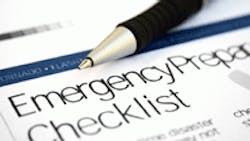Americans Reveal Their Post-9/11 Public Safety Concerns
The survey, "Diving Deeper into America's Greatest Public Safety Concerns," also revealed that 64 percent of respondents ages 18-24 confirmed that they do not feel any safer 10 years after 9/11. Nearly four in 10 Americans consider their town anywhere from slightly to completely unprepared for emergencies such as natural disasters, terrorism and health pandemics, and an overwhelming 90 percent feel that some form of improvement is needed to enhance emergency awareness and communications where they live.
Considering all that has been accomplished, as well as the planned improvements for the future, the question begs to be asked: Are Americans' concerns about public safety and preparedness grounded in reality or is this merely a matter of perception?
Communications
Most of us can agree that there still is much to be done with regard to improving emergency communications and preparedness. Even so, it is impossible to overlook the progress that has been made over the past decade.
We've clearly come a long way since the days when broadcast media and outdoor warning sirens represented the primary methods of emergency warning and mass notification. The layers of communication have expanded to include everything from more sophisticated automated landline and cell phone call/page systems, text messaging and other SMS formats, to IP-based communications ranging from email to the full spectrum of social media such as Twitter and Facebook.
Today, most cities have solutions or services that enable individual residents to enroll and receive information ranging from traffic and weather emergencies, to hazardous material alerts and everything in between. Many of these tools, including the capability to issue customized text messages and emails for emergency alerts and notifications, have been in place for years.
In fact, many people are already familiar if not completely comfortable with these new technologies: Survey results indicate that about 57 percent of Americans would use multiple forms of communications (text messaging, social media, email or a combination of all three) in the event that they were prevented from using either landline or cell phone voice communications.
Nevertheless, a sizeable number of Americans still insist that they actually feel less safe today than they did before 9/11. We need to accept that, though real or perceived, there is concern about public safety among the American public.
In some cases, planners also may have to accept some level of responsibility for the misconceptions of so many citizens. Based on the survey results, it appears that many public safety officials have overlooked the need to communicate with citizens the steps that have been taken in the name of safety and preparedness. Whether through newsletters, Web sites, the local media or town meetings, effectively communicating updates on a continuous year-round basis are central to changing public perceptions.
Individual Preparedness
We still have a lot to do in the United States to achieve visible progress that will make citizens feel safer, especially younger Americans who are old enough remember 9/11. This generation in particular can have a profound impact in sharing information about public safety efforts through their understanding and use of the new communications technology that now plays such an important role in American life.
If education is critical to changing public perception, then reinforcing the idea that responsibility for public safety goes well beyond first responders and city officials is critical. Public safety and disaster preparedness must be everyone's concern, and that includes individual citizens.
For the average person, this means being proactive about their own safety and that of their families. Federal Signal's 2010 public safety survey, however, revealed that more than half of respondents indicated they had no family emergency plan; 54 percent said they do not have a home emergency kit; and slightly more than half were not even aware if their city or town was capable of alerting them in the event of an emergency.
Citizens need to know what they can do for themselves. The 2010 study, for example, showed that 37 percent of Americans said they lack the confidence to know what action to take in a given emergency. It is only through improving overall awareness of public safety and preparedness that planners and decision makers can instill in citizens the personal confidence that will prove essential in the face of an emergency.
Federal Signal's 2011 public safety survey was conducted by Zogby International.
